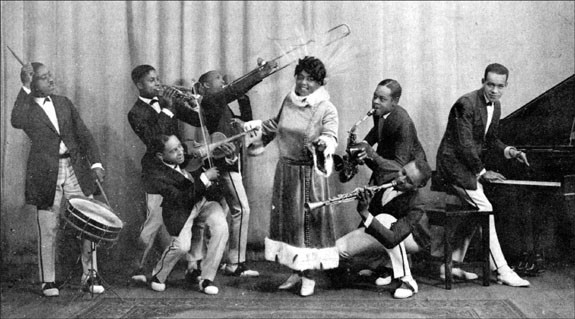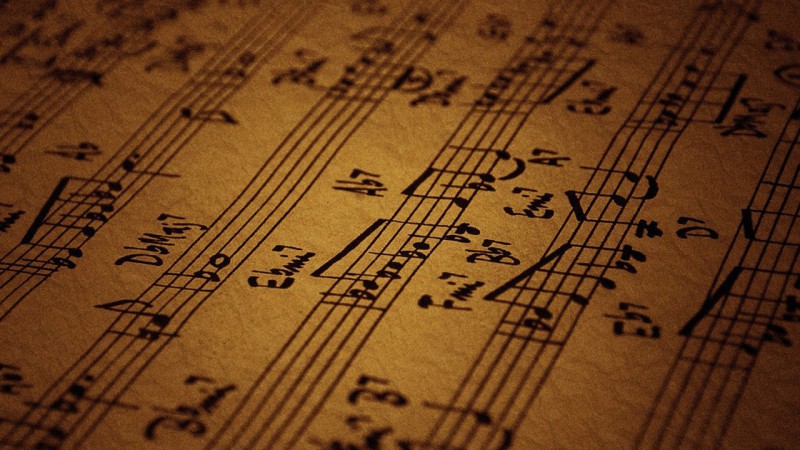Introduction to Modern Music
Music is a hidden arithmetic exercise of the soul, which does not know that it is counting.Gottfried Wilhelm von Leibniz
Our history of modern music begins in the early twentieth century, around the first half of the ’10s when people begin to think for the first time to music (and movies), as a business. It’s thanks to the born of industry that began to spread first early Country records of white music and first Jazz and Blues records of black music.
Philosophical Roots of Modern Music
The entire twentieth century was certainly characterized by deep changes. A series of conceptual revolutions, stylistic and social, were present for some time in unconscious of the entire Western society. Revolutions that have their roots in philosophical thought. In particular, Arthur Schopenhauer, Karl Marx, Giacomo Leopardi, but above all Friedrich Nietzsche.
Without music, life would be a mistake Friedrich Nietzsche
The german philosopher was the first to declare the inevitable death of tradition. With him, all Western art refuses adapting to the model of pre-formed absolute beauty imposed, in fact, by old traditions. Thus was born the will of affirmation for all that branches of abstract art that include rock music and atonal music.
It’s interesting to note that in ancient greek, the word “music” has a broad meaning which coincides with what today we might call “spirit”. Walter Friedrich Otto even claimed that music is not just an attempt to communicate with the divine, but itself a divine act.
All contemporary music is a spiritual mirror in which you reflect these radical changes in culture and society; but the same phenomenon is also reflected in painting, cinema and literature.
Throughout the history of twentieth century music, that is, the one that breaks away from tradition, there are two different conceptual layers: popular music, that starts by on-the-road singers and avant-garde music following the cultured roots of classical music.
If until 1800 classical music was dominant, ironically, it will become an underground laboratory of innovative concepts and experiments. Popular music instead dominate the business. At some point in history, there will be a meeting between these two worlds, which will result in new fascinating combinations and contaminations.
The Birth of Blues and Jazz
Blues and all black african-american music, played a very important role in the emergence and spread of popular music in his currently best known forms.
For a long time blacks had begun to perform spiritual, religious songs and choruses (Christian religion was imposed to slaves by their masters). So much so that singers of black churches will be a model for the first Jazz, which will resume those arrangements and riffs.
As soon as it became possible for black people to have musical instruments, guitar and harmonica became bones who composes the skeleton of first Blues songs in history.
In regions where was a primary French and Spanish domination, more freedom was granted to deported slaves. In there was mergers between very different cultures. In New Orleans, for example, by the encounter of ancient African traditions and French bands, borns the Jazz.
Unfortunately, even when slavery was abolished, entered into force laws of racial segregation. For that reason, groups of African Americans became more supportive and cohesive between them. It was the time when first complex of African American musicians borns, as the figure of black show-man: the bluesman.
As you can imagine, in those social conditions, the first Jazz recordings were made by white musicians: the Original Dixieland Jazz Band. Only in 1920 did the entrance on scene the first black artist, Mamie Smith, with Crazy Blues, the first popular blues record, leading the way for black music on the market.

Around 1920, were sold in the United States more than 100 million records each year; This success hinted to nascent record companies (RCA, CBS, EMI) that the media storage used were no longer suitable for a mass musical diffusion.
In 1926, Vitaphone produced for the first time 16 inches disc to 33 rpm and a third per minute (calculated to be equivalent to a cinematographic roll), coining in fact the concept of music album.
These are the years of first recordings in studio by bluesman as Blind Lemon Jefferson or jazz orchestras as the Fletcher’s Onderson band (where Louis Armstrong has played).
Popular music was spreading his voice, spoken for common people and written to be easily accessible to a wide range of cultures. These musical forms are much vary from traditional classical music, especially, as compared, it is characterized by few elements and a lot of instrumental improvisation.
While the United States are the main theater of these popular changes, in Europe begin to arise first avant-garde cultural movements that go to involve composers like Schoenberg, Berg and Stravinsky, who mess up all classic rules of composition.
